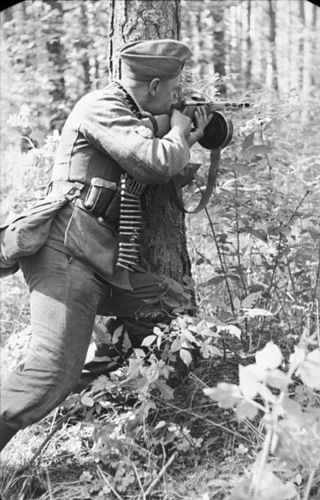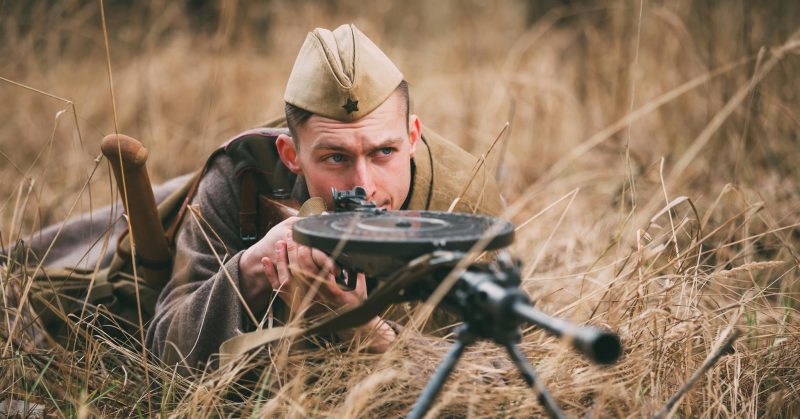The Second World War significantly affected the development of Soviet small arms and showed that simple weapons can be more effective than complex weapons.
Combat losses from the use of small arms on the Eastern Front of World War II, known as the Great Patriotic War in the USSR, were approximately 28-30%. The following are several examples of small arms developed by the Soviet Union during the war.
PPSh-41
Soviet weapons designer Georgy Shpagin is known for creating the PPSh submachine gun and contributing to the development of the DShK machine gun. Shpagin’s submachine gun was adopted for service on December 21, 1940.
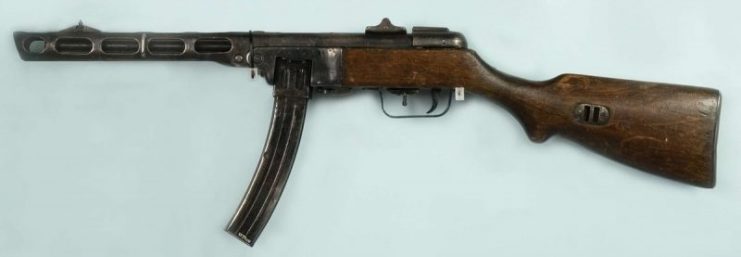
Nearly 30 pounds of metal and 5.6-7.1 man-hours went into the production of each PPSh-41. It was possible to build this weapon practically anywhere–cases of its manufacture in guerrilla workshops are known. However, the drum magazine was a complex element and had several drawbacks.
PPS-43
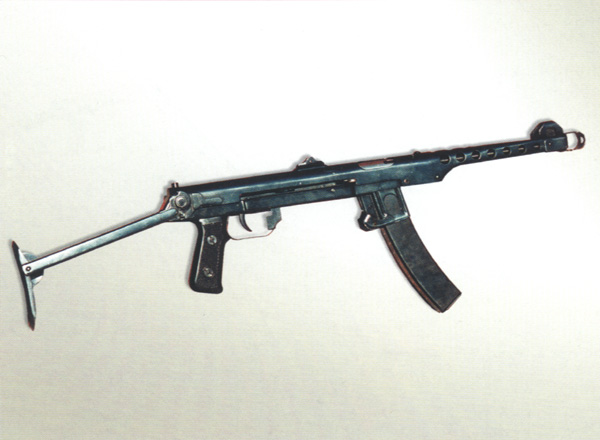
PPS-43, created by the designer Alexei Sudayev, was one of the simplest and most reliable Soviet submachine guns. This weapon was produced in besieged Leningrad. It required over 14 pounds of metal and 2.7 man-hours of labor for its creation. The main advantages of the PPS-43 were ease of disassembly and assembly, no problem with overheating, and the fact that dirt did not affect its operability.
PTRS
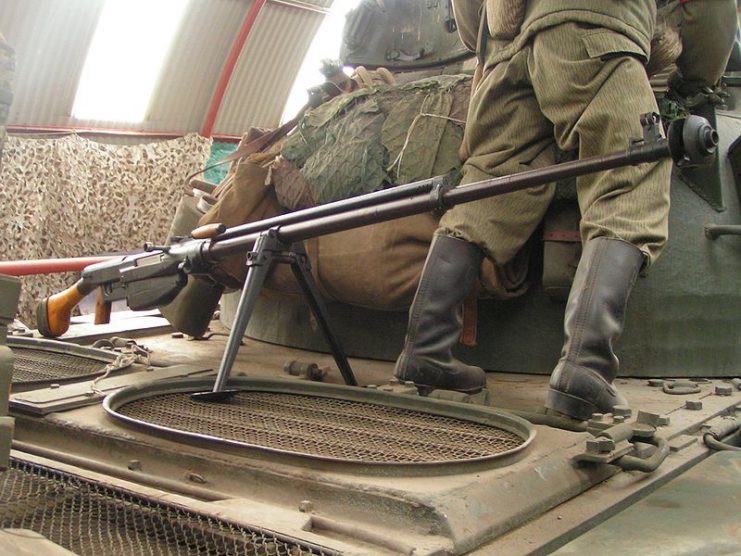
To combat the rapidly advancing German tanks, the Soviets needed an effective and simple weapon capable of stopping them. The PTRS, which began to be produced in November 1941, was an anti-tank rifle that met that main requirement. It was self-loading and used a magazine that held five rounds.
In the initial period of the Great Patriotic War, this anti-tank rifle was used to engage light and medium tanks, armored cars, and fortified firing points. Two types of cartridges were used: 14.5 × 114 mm B-32 with a steel hardened core, and BS-41 with a cermet core capable of penetrating armor 1.2-1.6″ thick from up to 1,300 feet away. The 15 rounds per minute rate of fire also made the PTRS useful for firing at aircraft.
Degtyaryov machine gun
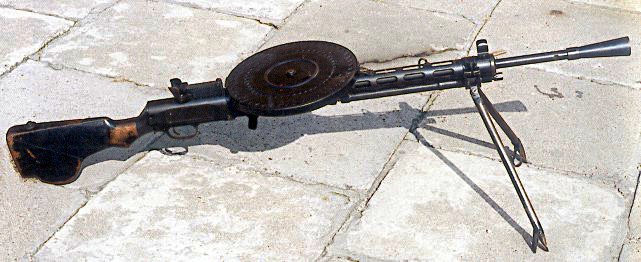
Developed by Vasily Degtyarev and first made on November 12, 1927, this machine gun was one of the first examples of small arms created in the USSR. It was used in aviation and on tanks, and was also used as the main weapon for fire support until the end of the Great Patriotic War.
Thanks to the use of a 7.62 × 54R cartridge and the 500-600 rounds per minute rate of fire, the Degtyaryov had good fighting power. Germans and Finns made use of captured Degtyaryov machine guns.
SVT-40
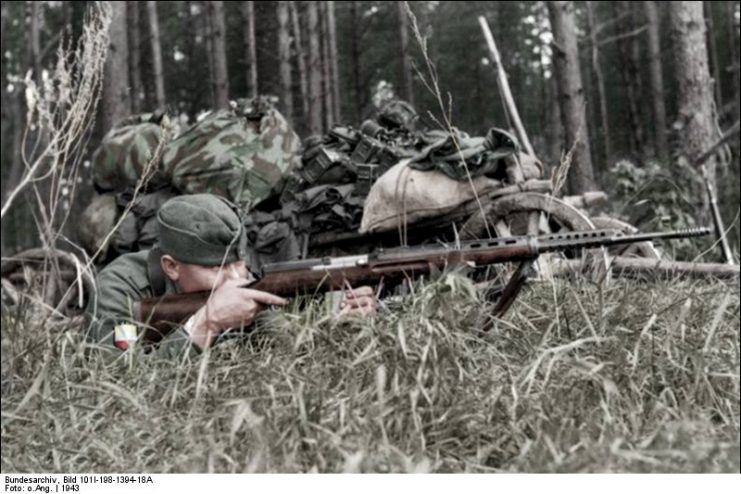
Fedor Tokarev made a great contribution to the development of Soviet small arms. The SVT-40 self-loading rifle was one of his inventions. It was distinguished by its excellent firing accuracy at a range of nearly 2,000 feet and a high rate of fire of 20-25 rounds per minute. Lyudmila Pavlyuchenko, the most successful woman sniper, preferred using the SVT-40.
However, among the Soviet troops there was dissatisfaction about the unreliability of SVT-40. Its complicated design and specific care requirements made it difficult to maintain. In addition, the Red Army supplied a poor-quality lubricant, and because their gunpowder had additives, carbon deposits occurred inside the weapon. Despite those shortcomings, the SVT-40 was effective.
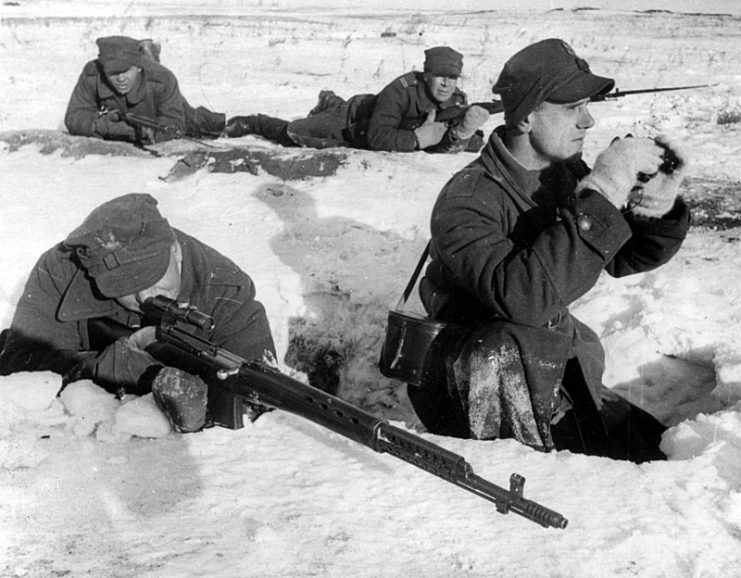
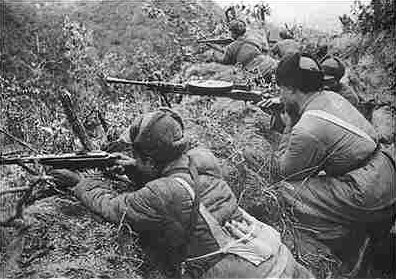
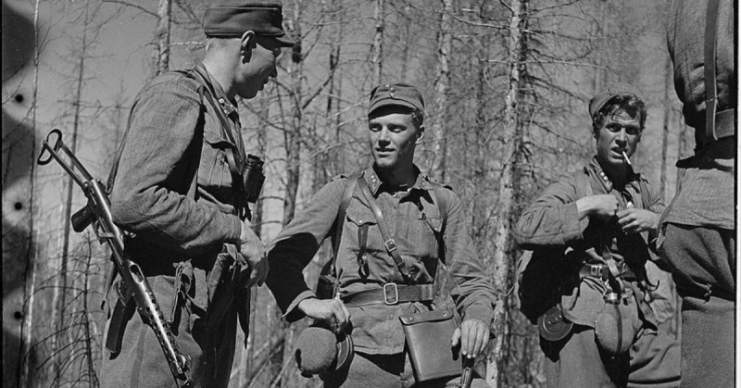
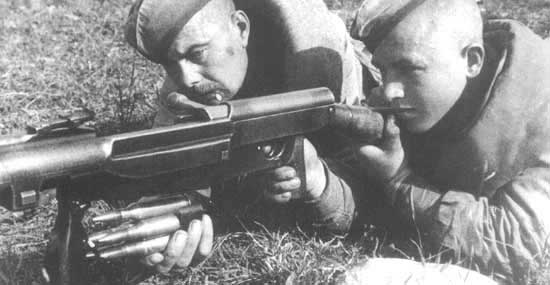
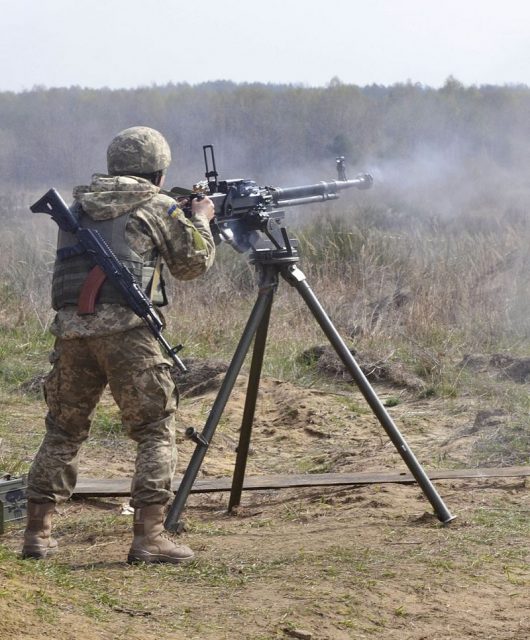
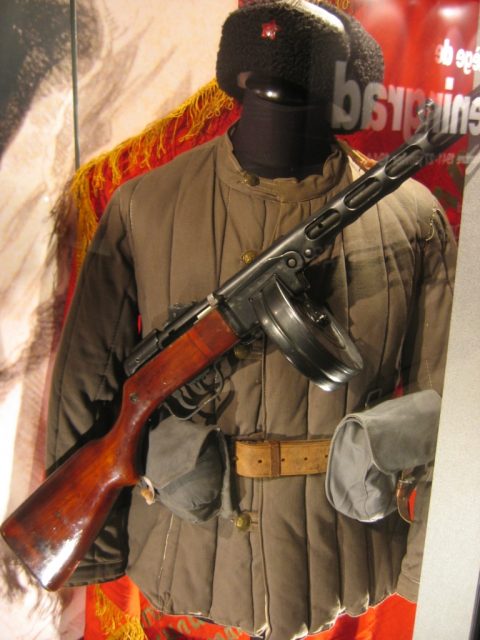
CC BY-SA 3.0
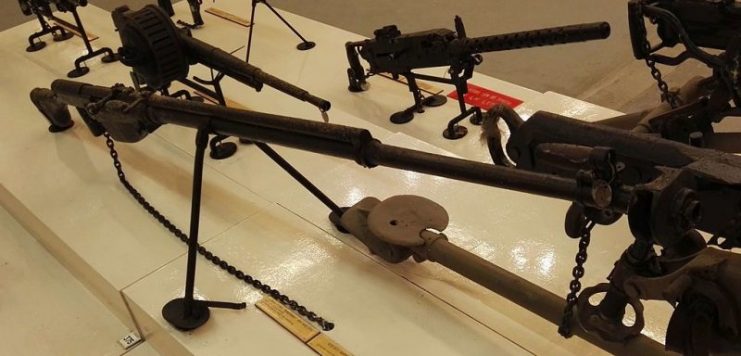
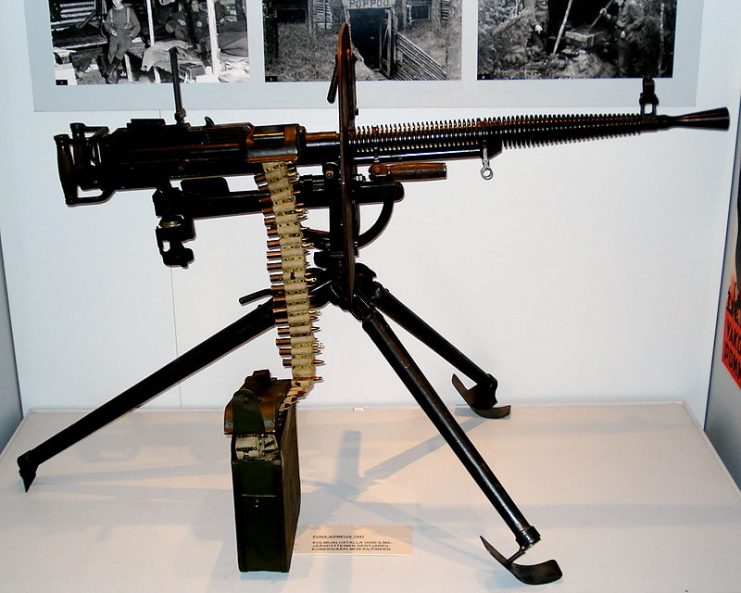
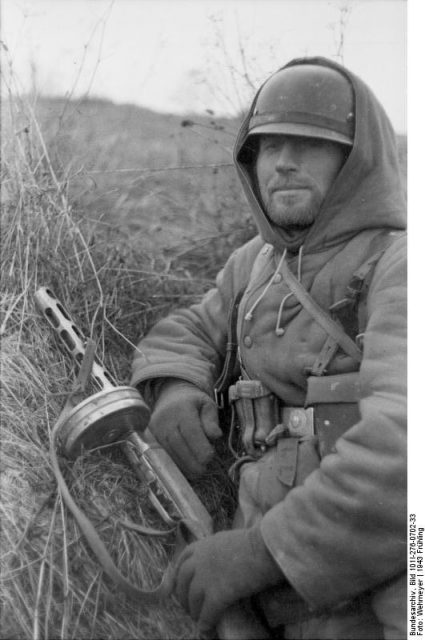
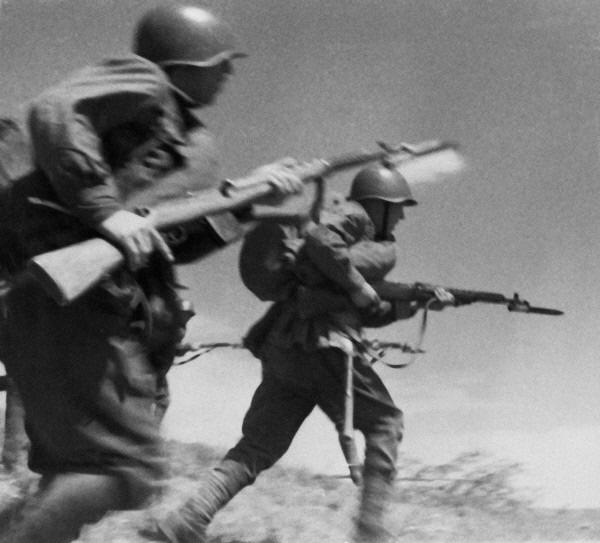
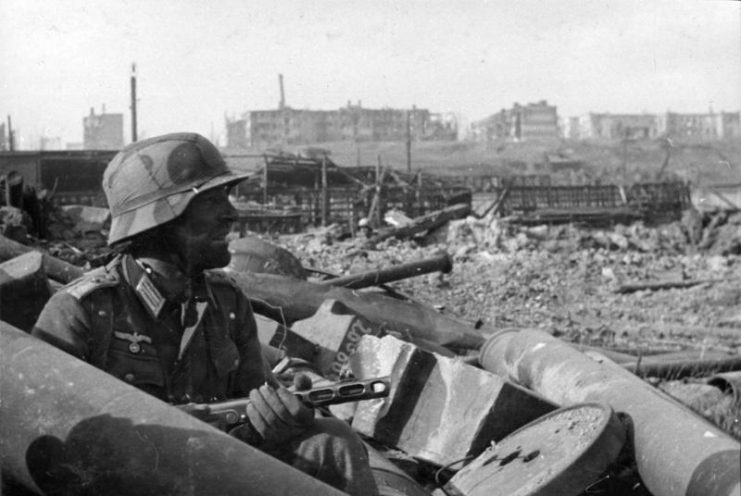
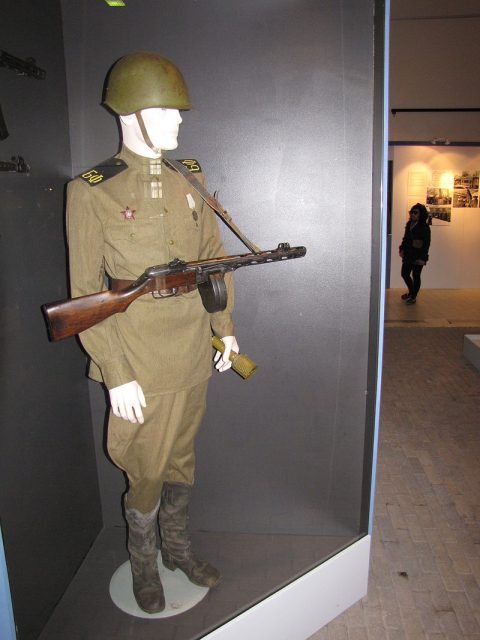
Read another story from us: Best Infantry Weapons of WW2
